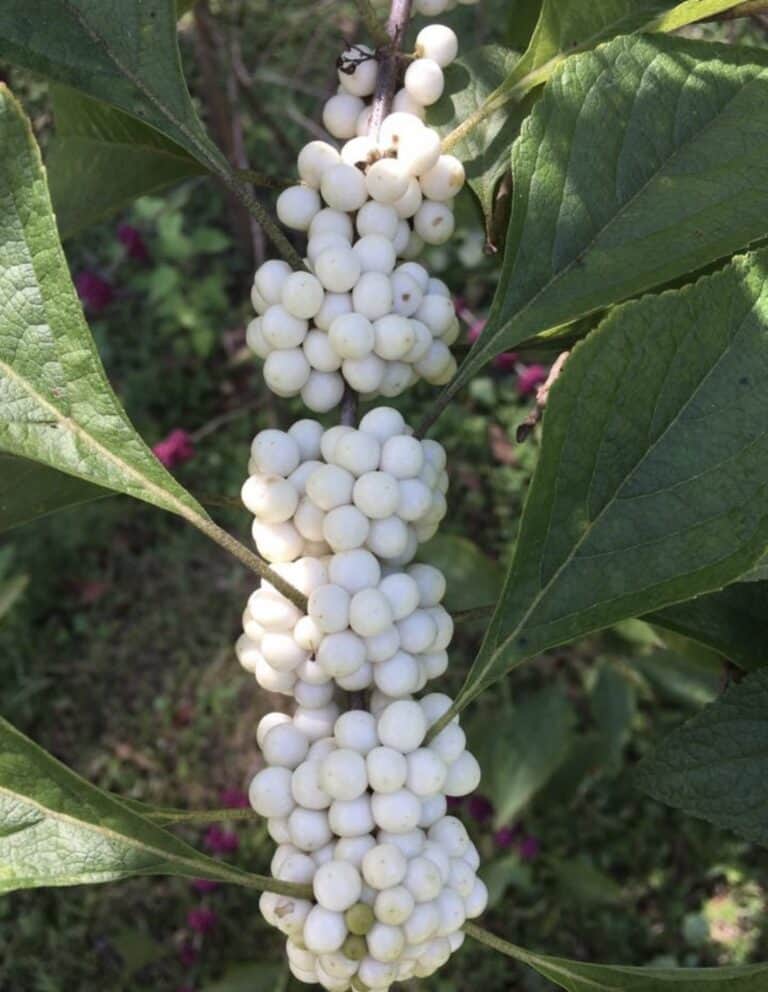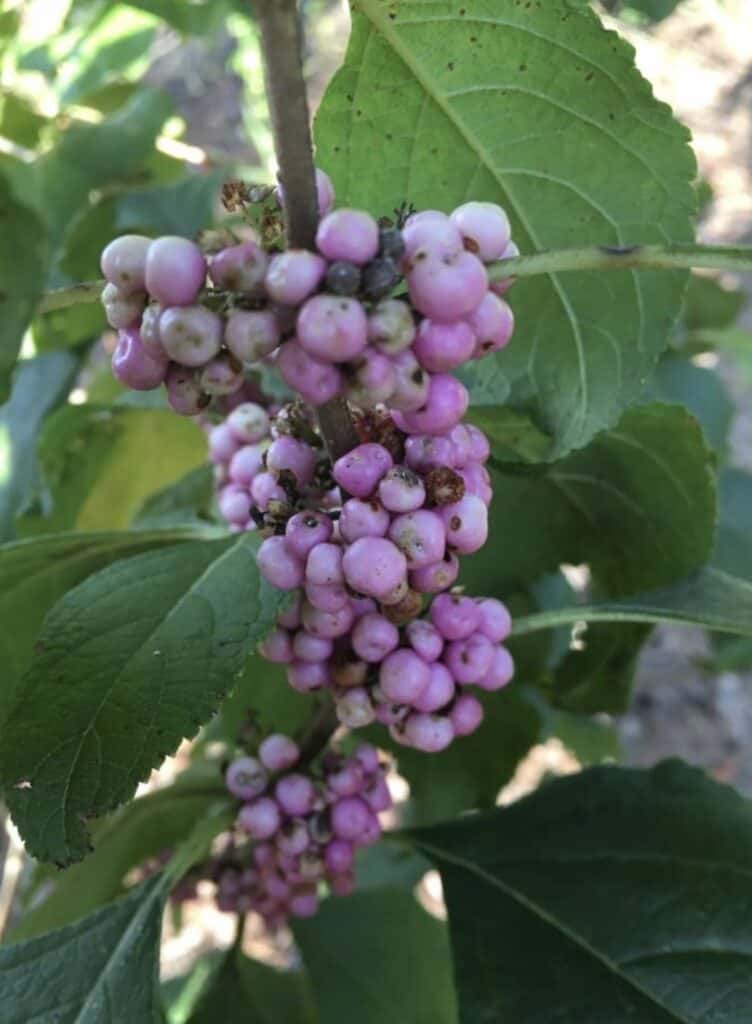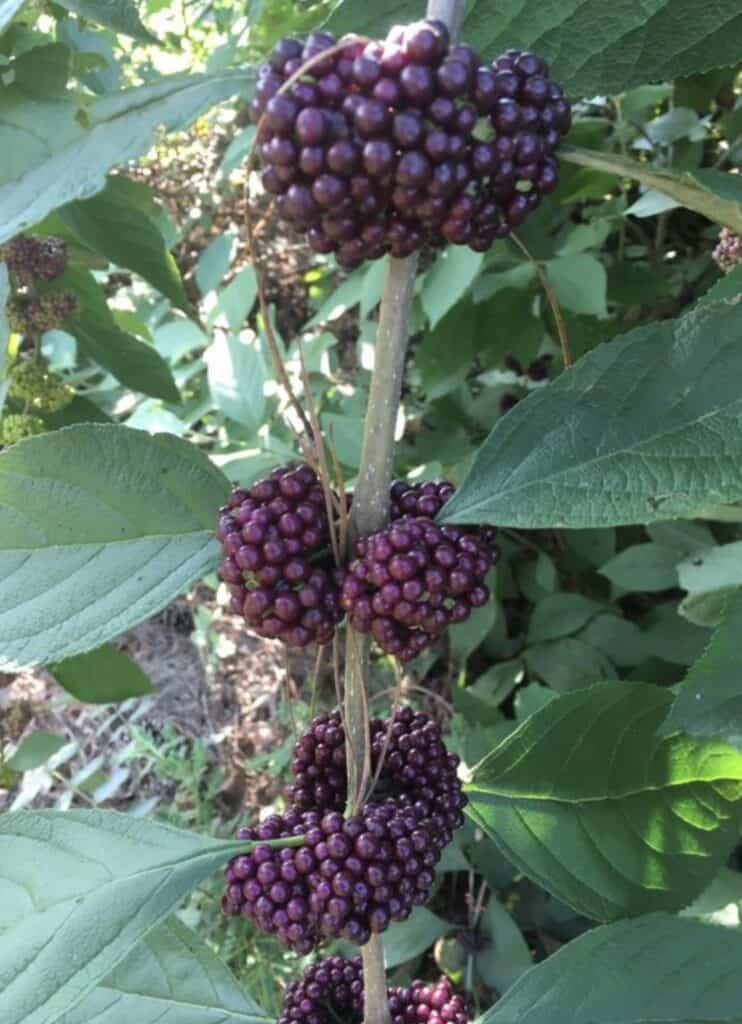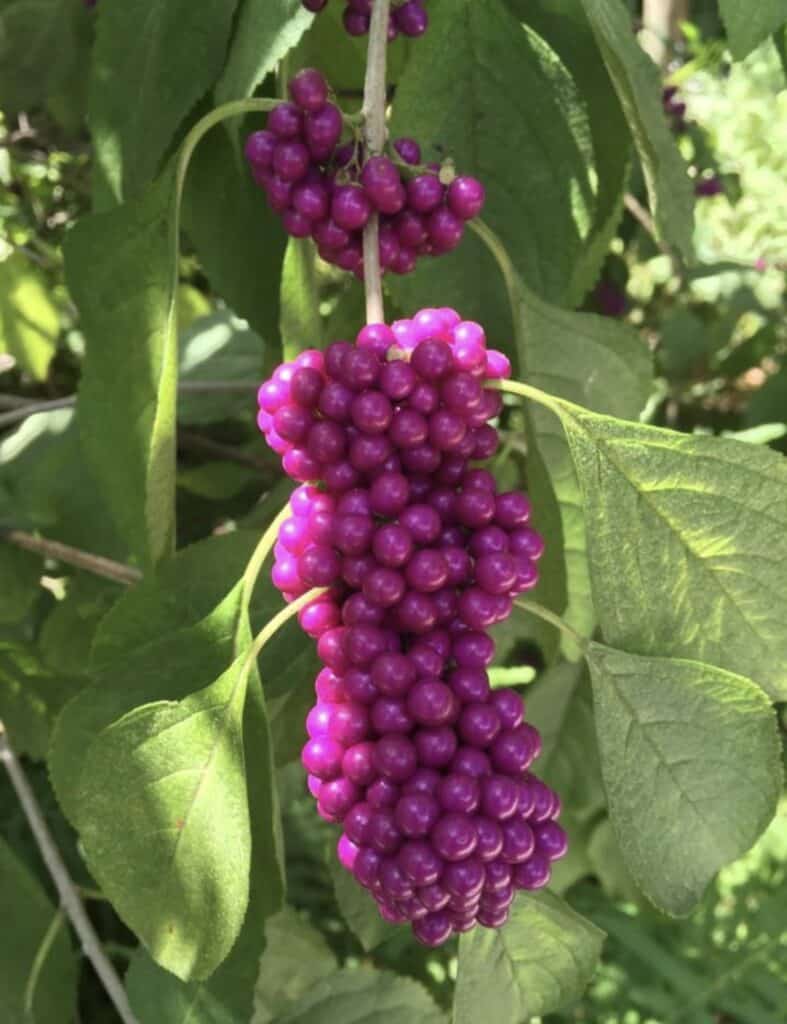As the native plant movement gains momentum, more NOLA gardeners are now incorporating the American beautyberry, a Louisiana Super Plant, in their landscape. Learn why you may want to consider it too.
Photo: Callicarpa americana, American beautyberry by Dr. Allen Owings
Callicarpa americana, American beautyberry or French Mulberry. It is a native plant to southeastern United States and a Louisiana Super Plant. Known for its colorful berries, American beautyberry has clusters of pink flowers which are inconspicuous and bloom in late summer followed by clusters of magenta berries. Bees are attracted to the flowers and birds eat the berries in fall. This plant is a deciduous shrub with coarse textured leaves. The stems may die to the ground in cold winters. It can be found growing wild and is cold hardy to about zone 7. This moderately fast grower reaches to 5 feet or more. It is a mounding but irregular loose branched shrub and is short lived of less than 10 years.

Callicarpa americana
American beautyberry is tolerant of almost any well-drained soil and prefers slightly acid soil. Plants produce more fruit in full sun and less fruit in shade. The leaves drop in fall but the berries remain. The berries produce on new growth and can be cut back in winter without loss of berries in fall.
Propagate American beautyberry by seeds. It blooms August to November. Container plants may be planted in the landscape at any time. It does not need to be fertilized but may be fertilized in late winter with ½ cup for small plants to 1 cup for large plants of all-purpose fertilizer or use slow release fertilizer as recommended. Plants should be planted at the same level grown in container.

Callicarpa americana
American beautyberry can be used as a native deciduous plant, for ornamental specimen and to attract wildlife. Is an important food source for birds and attracts deer. Used by Native Americans for medicinal purposes. Can be used to make teas and jellies. It has showy white, pink to purple berries. It is drought tolerant. This plant appears as a single plant or in a large colony.
Other varieties; C. americana, variety ‘Lactea’ has white fruit, C. dichotoma, C. has light lavender berries and is more cold hardy, C. japonica (C. shikokiana) produces light pinkish-lilac and purple berries and does well in upper South, ‘Leucocarpa’ produces white berries, C. bodinieri, the Bodinier beautyberry is an large and loose and produces an abundance of magenta colored berries, ‘Profusion’ is an excellent cultivar with violet colored berries in early fall, C. acuminata is the black beautyberry, it grows 8ft tall with ascending branches and produces shiny dark purple berries in autumn.

Callicarpa americana
Learn more:
- How to grow American Beautyberry, LSU AgCenter
- American Beautyberry Louisiana Super Plant Fact Sheet, LSU AgCenter

Karen Blackburn
Master Gardener of Greater New Orleans

